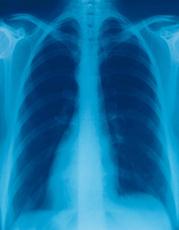 |
 |
 |
||
    |
||||
|
||||
|
Other Health Topics:
X-Rays
Also called: Radiography, Roentgen rays
You've probably had an X-ray examination of some part of your body. Health care professionals use them to look for broken bones, problems in your lungs and abdomen, cavities in your teeth and many other problems. For example, mammograms use X-rays to look for tumors or suspicious areas in the breasts. X-ray technology uses electromagnetic radiation to make images. The image is recorded on a film, called a radiograph. The parts of your body appear light or dark due to the different rates that your tissues absorb the X-rays. Calcium in bones absorbs X-rays the most, so bones look white on the radiograph. Fat and other soft tissues absorb less, and look gray. Air absorbs least, so lungs look black. X-ray examination is painless, fast and easy. The amount of radiation exposure you receive during an X-ray examination is small.
Start Here
|
| Home | Health Topics | Drugs & Supplements | Encyclopedia | Dictionary | News | Directories | Other Resources | |
| Disclaimers | Copyright | Privacy | Accessibility | Quality Guidelines U.S. National Library of Medicine, 8600 Rockville Pike, Bethesda, MD 20894 National Institutes of Health | Department of Health & Human Services |
Date last updated: 04 April 2009 Topic last reviewed: 07 November 2008 |


